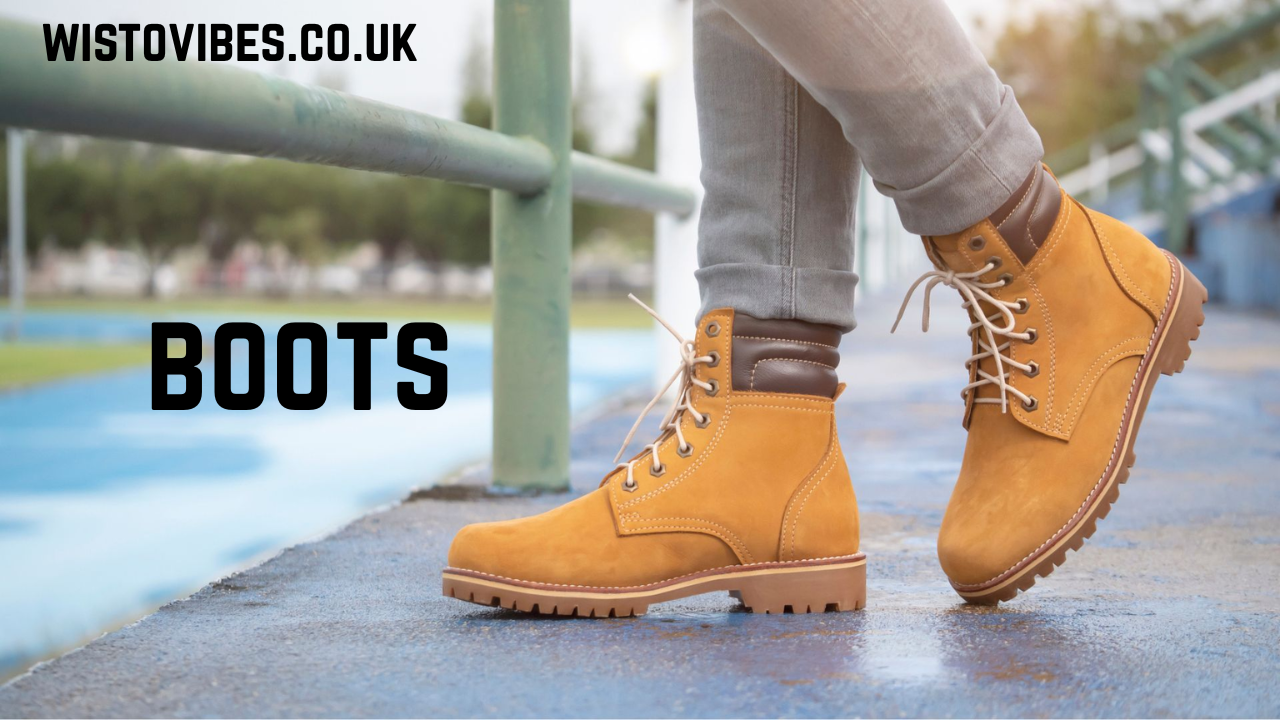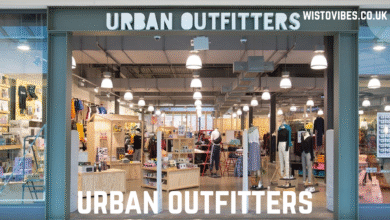Boots have been an essential part of human footwear for centuries, transcending cultures, climates, and fashion movements. Their popularity lies not only in their practical function of protecting the feet and legs but also in their ability to adapt to the times. From rugged work boots designed for heavy labor to sleek fashion boots gracing runways, boots have maintained their relevance across generations. They represent durability, strength, and style, making them one of the most versatile footwear categories ever created. Today, boots continue to evolve with innovative materials and designs while holding firmly onto their cultural roots.
Historical Origins of Boots
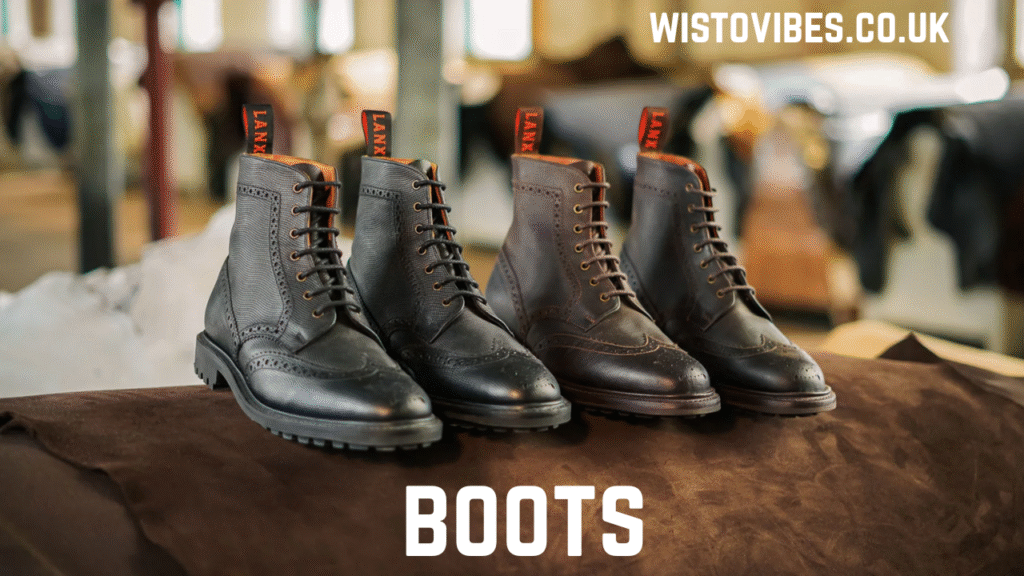
The origins of boots date back thousands of years, with early civilizations crafting rudimentary leather or fur versions to withstand harsh climates. Ancient Egyptians and Persians wore early boot-like footwear, while nomadic tribes in cold regions relied on fur-lined boots to survive freezing winters. Over time, boots became symbols of social class and military power, often decorated with elaborate designs for kings, warriors, and nobles. As trade expanded, boots spread across continents, influencing regional variations such as Mongolian riding boots, European cavalry boots, and Native American moccasin-style boots. This long lineage proves that boots have always been more than mere protection—they carried symbolic meaning tied to identity and survival.
Boots in Military and Workwear Traditions
Military history is filled with examples of boots shaping functionality and appearance. Soldiers relied on sturdy leather boots for protection and performance in battle, whether marching through muddy fields or engaging in cavalry charges. Work boots followed a similar path, offering industrial workers and miners durable, reinforced footwear to endure hazardous environments. Steel-toe boots, waterproof designs, and slip-resistant soles were developed to safeguard workers’ feet while ensuring comfort during long hours. Today, these traditions live on, with military-inspired boots becoming fashion icons and work boots like those used in construction or logging remaining a trusted necessity.
Fashion Transformation of Boots
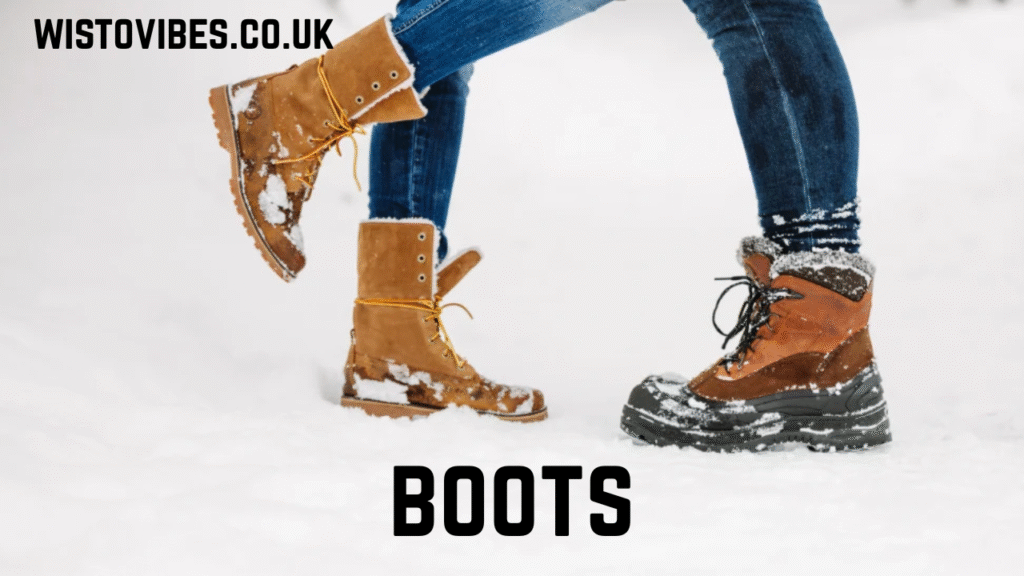
Beyond utility, boots gradually took on a fashionable role, becoming integral to personal expression. The 1960s and 1970s popularized go-go boots and knee-high silhouettes for women, symbolizing liberation and modern style. In contrast, cowboy boots emerged as enduring symbols of Western identity, blending practicality with cultural storytelling. Later decades saw designers experiment with ankle boots, thigh-high boots, and stiletto-heeled boots, ensuring their place in high fashion. Today, fashion boots exist in countless forms, ranging from minimalist leather designs to extravagant creations with embroidery, buckles, and bold colors, reflecting their ability to balance both function and artistry.
Types of Boots for Different Occasions
The diversity of boots is staggering, with each type serving a unique purpose. Hiking boots provide ankle support and rugged soles for outdoor adventures, while Chelsea boots offer sleek sophistication for urban settings. Combat boots bring an edgy, rebellious aesthetic yet remain highly functional with durable laces and thick soles. Riding boots offer elegance paired with equestrian heritage, while snow boots prioritize insulation and waterproof materials for winter climates. From casual ankle boots to statement-making thigh-high boots, this wide spectrum allows boots to be worn in nearly any context—formal, casual, professional, or adventurous.
Materials Used in Crafting Boots
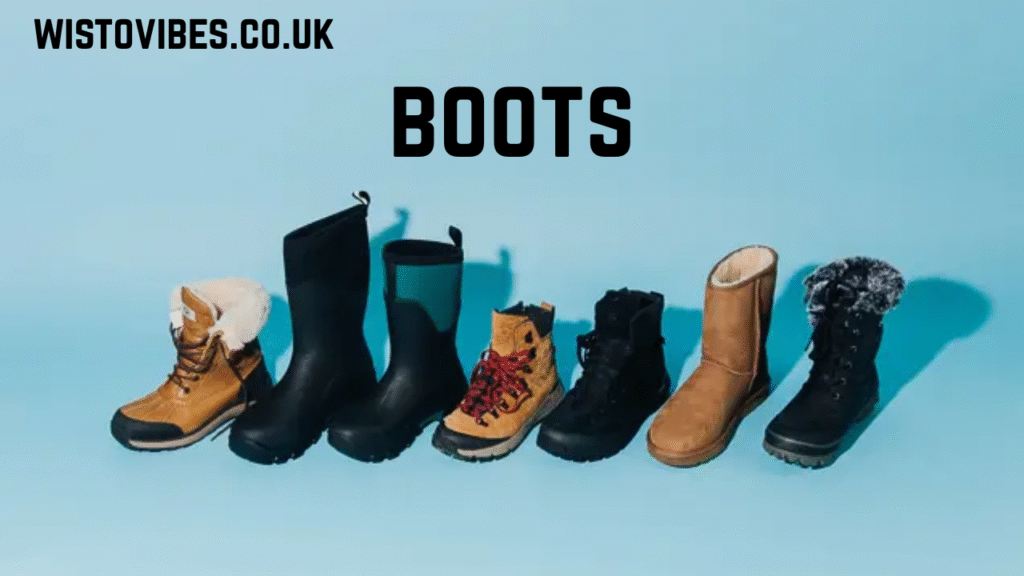
Boots are crafted from a variety of materials, each influencing their durability, comfort, and appearance. Leather remains the most traditional choice, prized for its resilience, breathability, and timeless look. Suede offers a softer texture, often used for fashion-forward designs, though it requires more care. Synthetic materials have grown popular for their affordability and water resistance, while rubber dominates rain and snow boot construction. Modern innovations include recycled fabrics, eco-friendly leathers, and hybrid materials that enhance sustainability without sacrificing quality. The choice of material not only impacts function but also shapes how boots age, as leather often develops a unique patina over time.
Craftsmanship and Design of Boots
The craftsmanship of boots plays a vital role in their quality and longevity. Traditional hand-stitched methods are still highly valued, ensuring strong seams and intricate detailing. Goodyear welt construction, for example, allows boots to be resoled, extending their lifespan significantly. Meanwhile, mass production techniques offer affordability but sometimes compromise durability. Designers also experiment with heel heights, toe shapes, shaft lengths, and embellishments to create variety. A well-crafted pair of boots reflects not only function but also artistry, making them a long-term investment in both fashion and utility.
Boots in Popular Culture
Boots have earned iconic status in popular culture, frequently appearing in music, film, and literature. Rock musicians have famously embraced combat and biker boots as symbols of rebellion, while cowboys and Western films cemented the mythic image of cowboy boots. Superheroes and action characters often don tall, commanding boots that enhance their presence. Fashion models on runways showcase boots as high art, while ordinary people integrate them into daily wardrobes for self-expression. These cultural associations show that boots are more than clothing; they are symbolic items that carry meaning and identity across genres and lifestyles.
Seasonal Importance of Boots
One of the strongest appeals of boots lies in their seasonal adaptability. During winter, snow boots and insulated designs keep feet warm and dry in harsh conditions. In autumn, leather ankle boots pair effortlessly with transitional outfits, offering both comfort and sophistication. Spring often calls for lighter suede or perforated designs, while summer festivals popularize cowboy boots paired with casual attire. Unlike many footwear types, boots adapt across all four seasons, offering protection against weather while remaining fashionable. This adaptability cements their role as a year-round staple in wardrobes worldwide.
Boots as a Symbol of Empowerment
For many, boots symbolize empowerment, confidence, and resilience. Tall boots elongate the figure and create a commanding presence, while combat boots evoke strength and determination. Women in particular have embraced boots as fashion statements that combine femininity with authority. Whether worn with dresses, jeans, or work uniforms, boots have the ability to transform posture, attitude, and style. Their symbolic power lies in their combination of protection and expression, making them footwear that resonates far beyond mere practicality.
Evolution of Boots in Sports and Outdoor Activities
Boots have also carved a space in the world of sports and outdoor pursuits. Hiking boots are engineered for endurance, using cushioned insoles and traction-heavy soles to tackle rough terrain. Ski boots are highly specialized, providing rigid support necessary for safety and performance on slopes. Equestrian boots blend elegance with performance, designed for riding comfort and control. Even in modern extreme sports, boots continue to evolve with cutting-edge designs and materials to meet the demands of adventurers. Their presence in sports underscores their adaptability across physical activities requiring both function and protection.
Technological Advances in Boots
Modern technology has transformed boots into highly functional footwear. Waterproof membranes such as Gore-Tex, lightweight cushioning foams, and shock-absorbing soles enhance comfort and protection. Some boots integrate smart features like temperature regulation or slip-resistant nanotechnology, appealing to both outdoor enthusiasts and urban professionals. Sustainable technologies also contribute to eco-friendly boot production, using recycled materials and ethical practices. These advances demonstrate that boots are not stuck in tradition but continue to evolve, offering improved performance for modern lifestyles while remaining stylish.
Boots in Gender-Neutral Fashion
While boots once followed traditional gendered lines, modern fashion has embraced boots as gender-neutral staples. Men and women alike wear Chelsea boots, combat boots, and hiking boots without restriction. Designers have blurred boundaries by creating unisex styles, emphasizing versatility and inclusivity. The idea that boots are for everyone reflects broader cultural shifts toward equality and individuality. By transcending gendered norms, boots stand out as footwear that belongs universally, making them a truly democratic item in contemporary wardrobes.
Global Influence of Boots
Boots carry distinctive cultural influences across the globe. Cowboy boots symbolize the American West, while Dr. Martens combat boots became staples of British subcultures. In Asia, traditional embroidered boots are tied to heritage, while Arctic boots from Inuit traditions represent survival ingenuity. Fashion hubs like Paris, Milan, and New York reinterpret boots each season, influencing global trends. This worldwide adoption highlights how boots adapt to different cultural narratives, blending tradition with modernity to remain universally beloved footwear.
Boots and Environmental Considerations
In the modern era, sustainability has become a key concern in boot production. Traditional leather, while durable, raises environmental issues tied to tanning and livestock industries. Many brands now explore eco-conscious alternatives such as plant-based leathers, recycled rubber soles, and ethically sourced materials. Repairable designs also encourage longevity, reducing waste from fast fashion. As consumers grow more environmentally aware, sustainable boots are becoming highly sought-after, offering the same style and durability with a reduced ecological footprint.
Boots in Professional Settings
Boots also hold a prominent place in professional environments. Formal leather boots can accompany business attire, creating polished and authoritative looks. Work boots continue to dominate industries such as construction, oil, and agriculture, where safety and function are paramount. Medical and emergency workers rely on specialized boots for support and protection during demanding shifts. Even in creative industries, boots serve as artistic statements that reflect personality while maintaining professionalism. Their adaptability to professional demands reinforces their unmatched versatility.
Psychological Connection to Boots
The psychological connection people feel toward boots cannot be ignored. Many individuals associate their boots with confidence, adventure, or personal milestones. A pair of hiking boots may recall unforgettable journeys, while cherished fashion boots may symbolize key life events. Boots often develop sentimental value because of their durability, accompanying wearers through numerous experiences. This emotional bond, combined with their symbolic meanings, creates a deeper relationship than other footwear, making boots treasured items in many wardrobes.
Challenges in Boot Care and Maintenance
Despite their durability, boots require proper care to maintain their quality. Leather must be cleaned, conditioned, and occasionally polished to prevent cracks and maintain shine. Suede needs careful handling to avoid stains, while waterproofing sprays help extend the life of outdoor boots. Resoling techniques ensure long-term usability for well-crafted designs. Neglecting maintenance can lead to deterioration, but consistent care transforms boots into lifelong companions. This challenge is part of the investment, teaching owners to value their footwear and develop rituals of preservation.
The Future of Boots
The future of boots looks promising, with fashion and function continuing to merge. Designers are experimenting with futuristic materials, smart features, and sustainable innovations. The blending of streetwear and high fashion has given boots a renewed spotlight, making them as relevant on runways as in outdoor adventures. Their timeless ability to adapt ensures boots will remain central to both style and necessity. As culture evolves, boots will continue to embody resilience, individuality, and universal appeal.
FAQs and Conclusion
Q1: Why are boots considered so versatile?
Boots are versatile because they serve practical functions like protection and support while also adapting to fashion, professional, and cultural contexts.
Q2: Which types of boots are best for everyday wear?
Chelsea boots, ankle boots, and casual leather boots are popular choices for everyday wear due to their balance of style and comfort.
Q3: How can boots be maintained for long life?
Regular cleaning, conditioning, waterproofing, and occasional resoling keep boots in excellent condition, extending their lifespan.
Q4: Are boots suitable for all seasons?
Yes, boots adapt across all seasons, with snow boots for winter, lighter suede styles for spring, leather designs for autumn, and breathable boots for summer.
Q5: What role will sustainability play in the future of boots?
Sustainability will become increasingly important, with eco-friendly materials and ethical production shaping how boots are designed and consumed.
Conclusion
Boots represent far more than footwear—they are icons of history, fashion, culture, and individuality. Their enduring appeal stems from their ability to adapt across centuries while remaining symbols of strength, resilience, and style. Whether for work, adventure, or self-expression, boots remain timeless companions that continue to define personal and collective identity.
Read More: Skyscanner A Complete Guide to the Popular Travel Search Engine
